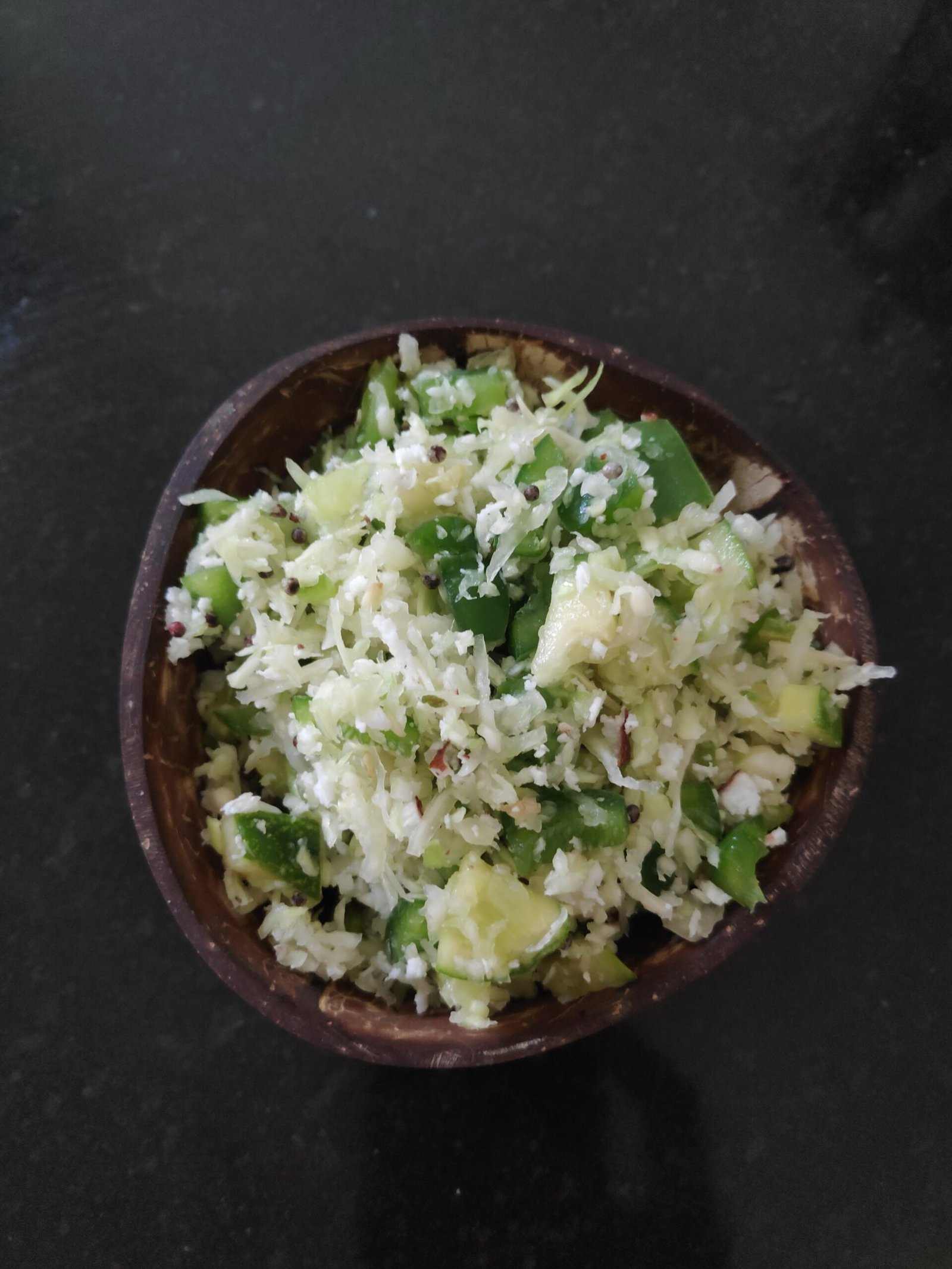Recipe credit: Darshana Muzumdar
Serves 4 people as a part of an Indian meal.
Ingredients
- 1 small to medium head of cabbage
- 2 medium size green capsicums
- 1 cucumber (optional)
- 1 tbsp mustard seeds
- ¼ tsp turmeric powder (optional)
- 1 tsp oil
- Salt to taste
Method
Grate cabbage and chop the capsicum into fine strips or small cubes. Place the capsicum in a thick bottom steel pot. Heat oil in an iron tempering ladle and add mustard seeds turning off the heat after they have all popped. Add this to the capsicum and cook it on medium heat till the capsicum becomes soft. Add the cabbage and cook covered for 1-2 minutes. Add turmeric and salt and mix well. Serve as an accompaniment with any Indian meal.
For the Whole-Food Plant-Based (WFPB) version:
This is by default a Whole Plant Based dish.


Share this:
- Click to share on Facebook (Opens in new window)
- Click to share on WhatsApp (Opens in new window)
- Click to share on Twitter (Opens in new window)
- Click to share on Pinterest (Opens in new window)
- Click to share on LinkedIn (Opens in new window)
- Click to share on Skype (Opens in new window)
- Click to share on Reddit (Opens in new window)
- Click to share on Tumblr (Opens in new window)
- Click to share on Pocket (Opens in new window)
- Click to share on Telegram (Opens in new window)
- Click to print (Opens in new window)

